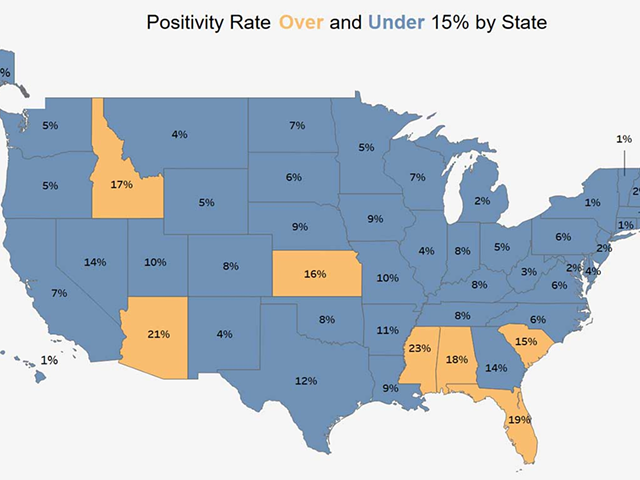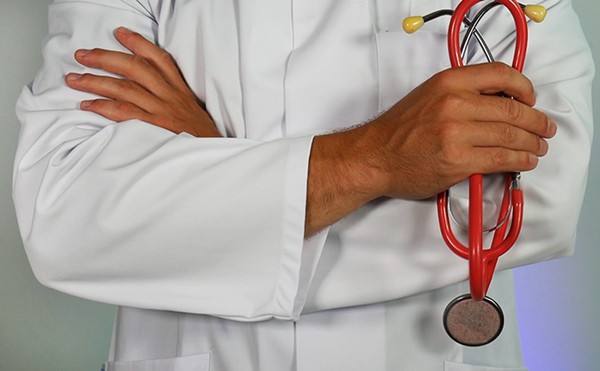Each Wednesday, Ohio Gov. Mike DeWine will be updating a travel advisory that asks Ohio residents who have visited any state with a COVID-19 positivity rate — aka the percentage of people who are testing positive for COVID-19 — of 15% or higher and returned home, or anyone from those states traveling to Ohio, to self-quarantine for 14 days.
Last week, that travel advisory included Mississippi (23.1%), Arizona (20.7%), Florida (19%), Alabama (18.5%), Idaho (17.4%), Kansas (16.3%) and South Carolina (15%), with those positivity rates.
This week, it has been updated to include Mississippi (25.8%), Alabama (19.9%), Nevada (19%), Florida (18.2%), Arizona (18.1%) and Idaho (17.5%), with those current positivity rates.
➡ Travel Advisory Update: Based on new positivity rates, Ohioans are encouraged to avoid travel to the states in yellow. Anyone entering Ohio after travel to these states is asked to self-quarantine for 14 days.
— Governor Mike DeWine (@GovMikeDeWine) August 5, 2020
More: https://t.co/okBJHIYR5Z#InThisTogetherOhio #MasksOnOhio pic.twitter.com/OZpDkAwV6O
The list of "yellow" states that fall under the advisory are updated weekly based on a "seven-day rolling average of positivity rates," according to the advisory landing page.
"I know this will be hard and is a sacrifice, especially as summer vacations are in full force, but when we have a higher likelihood of being exposed, we should take precautions to limit the exposure of others," said DeWine when he instituted the advisory and quarantine.
The coronavirus.ohio.gov website recommends these steps for self-quarantine, either at home or a hotel:
What to Do During Self-Quarantine
- Take your temperature with a thermometer two times a day and monitor for fever, as well as other symptoms including cough, difficulty breathing, fatigue, muscle or body aches, headache, loss of taste or smell, sore throat, congestion or runny nose, nausea or vomiting, or diarrhea.
- If fever and/or symptoms develop, call your medical provider.
- Remain at home and avoid all in-person activities. This includes work, grocery stores and pharmacies, public events, and public places.
- If you live in a home with other people who did not travel with you, stay in a separate room. If this is not possible, wear a face mask when you are in the same room and stay at least six feet away from others.
- Do not leave home except to seek medical care. If you need to see a provider for reasons other than a medical emergency, please call in advance and discuss the care you need.
- In the event of a medical emergency, call 9-1-1. Indicate that you are in home quarantine for novel coronavirus exposure. Keep a face mask on until you are asked by a health care provider to remove it.
- Do not have visitors in your home.
- Do not use public transportation, taxis, or ride-shares.





